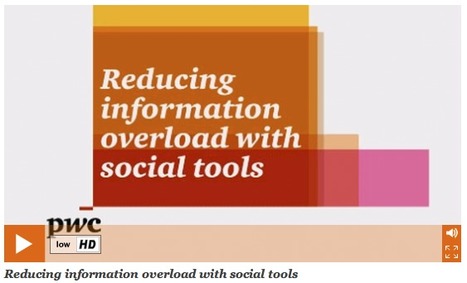Another great find from Robin Good
I dug deeper into the report that the video summarized:
The report is dense and it is written for coporations looking at selecting vendors for internal social collaboration platforms. So, alot of isn't relevant for nonprofits. The video, however, as Robin notes, is useful for the big picture.
But, on page 12, I found an interesting conceptual idea about the importance of social context creation that help overcome information overload. It talks about the social graph. It resonated with some early work of Rashmi Simha about social software design in the early days (see deck slides 22-30) http://www.slideshare.net/rashmi/designing-for-social-sharing-3569
In the early stages of social (think 200 3-2006), we socialized around object collection. We found other people through our interests. For me this happened by using delicious - I connected with people by looking at their collections and following them when there a common interest. I also used this strategy with Flickr.
Next phase was the "Social Graph" - that connected to idea/info through our friends. This phase happened when Facebook opened the gates. We discovered stuff through our friends -- or the "social graph" - a term that started being used around 2007. (http://beth.typepad.com/beths_blog/2007/09/how-to-avoid-so.html) - and discussion about open social graphs (http://beth.typepad.com/beths_blog/opensocial/)
In the report, on page 12, here is how the social graph is explained in the context of an Enteprise collaobration model
Divergent Phase: Social information appears but it is siloed
Convergent Phase: Information is more accessible but difficult to search
Navigational Phase: Information in graph form becomes integrated and navigable.
Key idea: Context creates relevance. Refers to this post in TechCrunch - http://techcrunch.com/2011/03/03/the-age-of-relevance
Several of the newest social platforms create "interest graphs" a map for navigating to subjects and people of interest. The Interest graph is a superset of the social graph, a people map. The interest graph includes people, things, and their linkages and it helps users navigate the information thicket.
How: Interest graph will consists of relationships between people and between business issues/workflow and people. Self-managed by these to find what's relevant. The addition of social layer and the ability to strucutre that information along other information a "graph form" are what provide the additiona context. With this additional context, organizations can confront and reduce information overload.
Insight: This has been my approach to curating for years -- creating collections based on:
(1) What is the best way to understand the topic
(2) Who are the leading thinkers
(3) What are the best blog posts, web sites, articles and books
To this, I'm adding visuals .....
How do you change the organization's behavior so that people are becoming curators of interest graphs?
Robin's Notes:
In issue 3 of PwC’s Tech Forecast there is a great video illustrating what is going to change in the near future when it comes to finding the right information.
"The Navigational phase of online information is just now emerging.
Within three to five years, finding more of the information we need--not to mention opportunities for more effective collaboration--will become possible. Social tools will help."
The animated video explains how making network and interest-based connections more visible will allow easier and more effective filtering and navigation of information spaces in the near future.
Insightful. 8/10
Watch the video here: http://www.pwc.com/us/en/technology-forecast/2011/issue3/index.jhtml
Via Robin Good



 Your new post is loading...
Your new post is loading...








